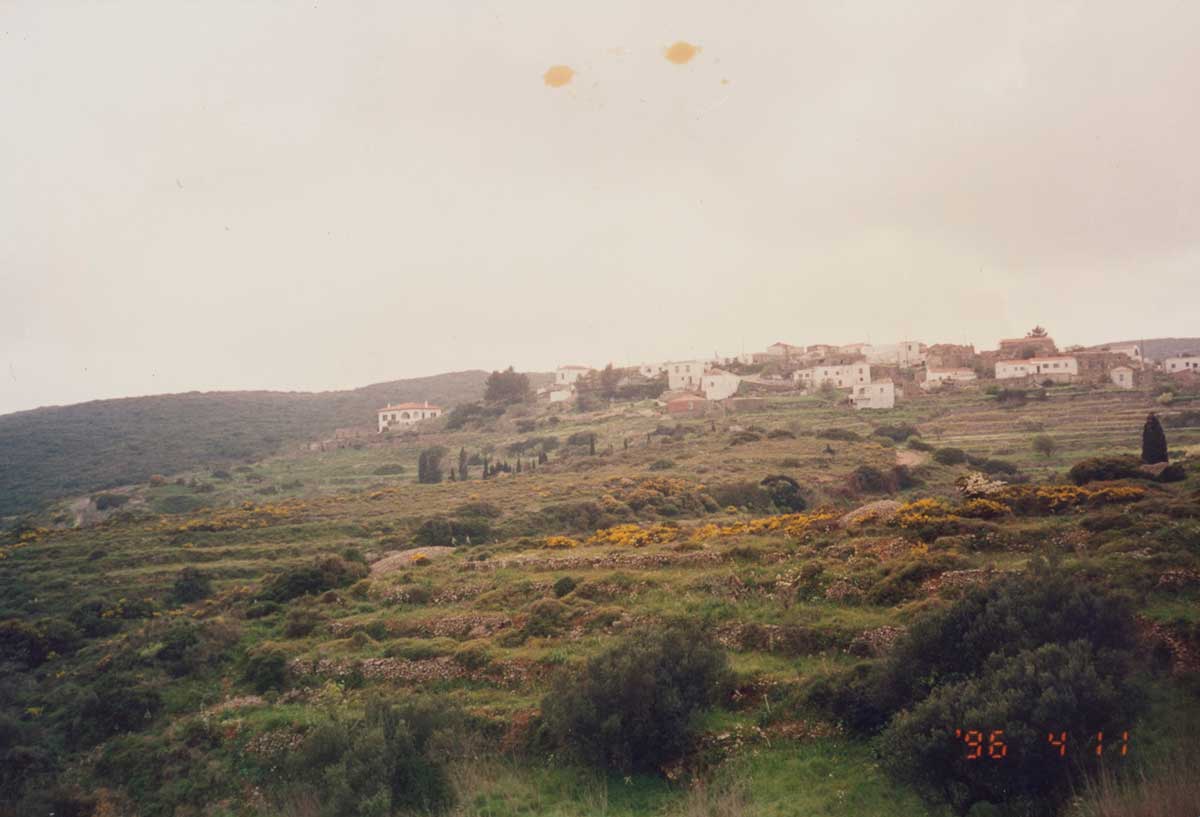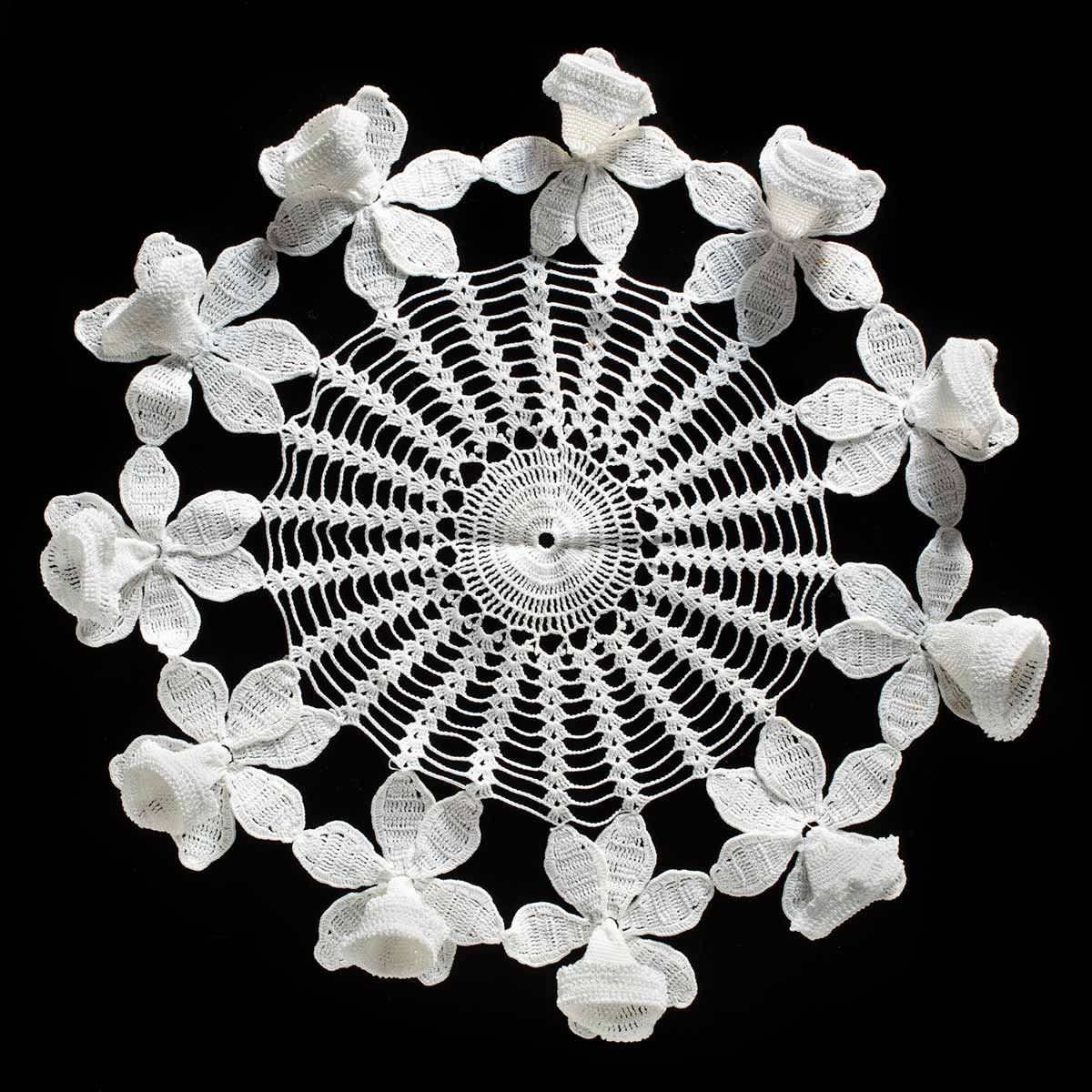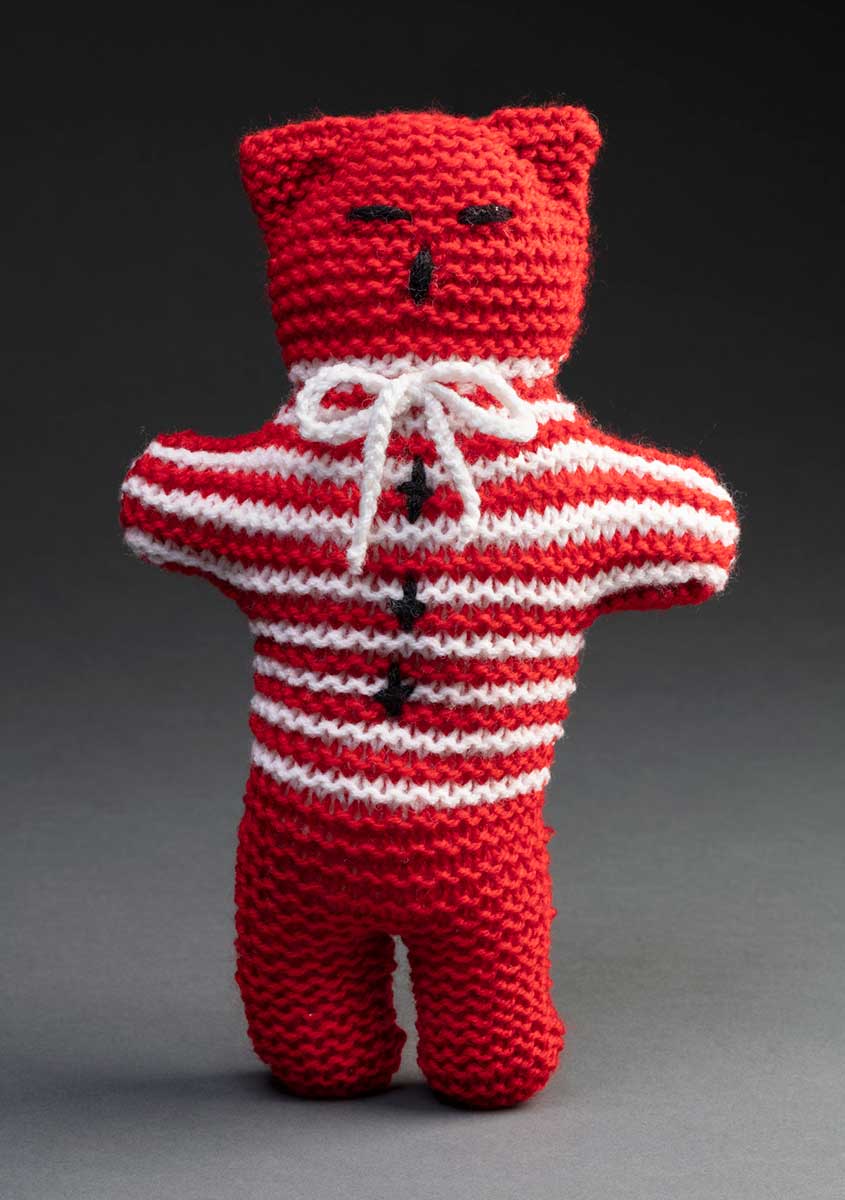The Effie Kyprios textile collection reveals a lifetime of creativity and showcases the incredible depth and diversity of Effie’s talent for needlework, crochet and weaving.
Early years in Greece

Effie Kyprios was born in 1931 on Kythera, a Greek island renowned for its beautiful handicraft. Growing up in the village of Aloizianika, Effie learnt many forms of needlework, crochet and weaving from a very early age.
She was completely self-taught, never receiving any formal tuition or learning how to read a pattern. Despite this, she had an intuitive understanding of the craft and could look at any needlework item and reproduce it perfectly from memory.
Effie’s father passed away when she was six years old, leaving her mother widowed and facing the prospect of raising five children on her own, the youngest only six months old.
Although she didn’t finish primary school, Effie began using her needlework as a means to support her family through the Second World War and the civil war which followed in Greece.

An industrious needleworker
From a young age Effie’s needlework talent was evident, and she pursued her craft with keen determination and a clear drive to grow her skills.
The earliest piece in the Effie Kyprios collection is a small woven handkerchief, handmade by a teenage Effie by candlelight after a long day picking olives during a harvest season.
In her teens, Effie saved up enough money to purchase a weaving loom and began making pieces for her family. She would also make pieces to sell to other families in her village, all the while helping her mother with domestic chores and looking after her younger siblings.
Effie created this red woven bedspread in her late teens. She handmade the piece from start to finish, including growing the fibres and spinning them into threads, which she then hand-dyed and wove into a bedspread.
Making in Australia
Effie married Peter George Kyprios in Greece in 1952. Peter had migrated to Australia in 1924 as a young boy but returned to Greece in 1951. After their wedding, the couple travelled together to Australia onboard the SS Oronsay passenger ship. Although they were limited in which items they could bring with them to Australia, Effie brought a selection of her handmade pieces with her.
Among these pieces which travelled with the couple were several items Effie had made for her trousseau, including a set of handmade pillowcases and a woven crib cover.

A lifelong passion
Arriving in Corowa, NSW, Effie and Peter grew their family and settled into their new home. Over the years they had four children, and Effie’s hands were never idle. She made every item of her children's clothing and made innumerable items for her home including table settings and bedspreads.
In 1965 the family moved from Corowa to Sydney, and Effie continued her prolific needlework practice. Over the decades she began making pieces for her children’s – and in time, grandchildren’s – homes. Effie took great pride in her skill and accuracy, her children recalling her challenging them to find a mistake in her work. They shared her love for the craft and took great pleasure in decorating their homes just as their mother had done.
Later in life, Effie turned to larger wool projects as her eyesight and the dexterity of her hands worsened. These pieces included knitted ‘trauma teddies’ for donation to local hospitals, and tiny crocheted teacup sets, which used leftover pieces of thread.

Post-war migration in Australia
Effie was among the more than 160,000 Greek immigrants who came to Australia after the Second World War with the relaxation of the White Australia policy.
Greek migration to Australia began as early as the 19th century. The discovery of gold and subsequent gold rushes of the 1850s saw large numbers of Greek people among the many who migrated to Australia to take advantage of the financial opportunity.
The Immigration Restriction Act 1901 (the formal establishment of the White Australia policy) drastically limited non-British migration to Australia and rapidly changed the demographic of Australia’s population. In 1947 those born outside of Australia, Ireland or the United Kingdom made up only 2.7 per cent of the population.
By the 1940s it had become clear that these migration limits were greatly hindering Australia’s population growth. After the Second World War immigration minister, Arthur Calwell, began relaxing immigration policies to allow migrants and refugees from continental Europe. Two million immigrants arrived in Australia between 1945 and 1965.
Anna Chrysostomou, eldest daughter of Effie Kyprios:
They are part of the migrant story which is in the background of so many Australians. I consider my parents, and those similar to them, as true 'heroes' for the courage which they showed in moving so far away from all that was familiar to them. They maintained the values and skills of their old homeland whilst adjusting to, and raising their families in, their new homeland. These items are of an era which is no longer with us but which is in the collective memory of many of us.
Effie Kyprios collection
Effie’s children, Anna, Tess, George and Gloria donated the Effie Kyprios collection to the National Museum. It includes more than 34 handmade textile pieces such as bedspreads, table settings, table runners, pillowcases, knitted teddies and ornamental crocheted teacup sets, as well as a wooden yarn swift and a selection of photographs. These pieces have been cherished by Effie’s family throughout their lifetime.
In our collection











